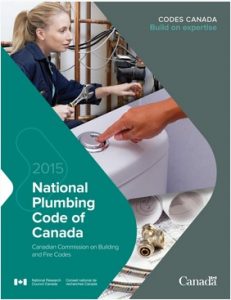
The National Plumbing Code 2015 came into force on January 1, 2017 and is applicable throughout the Province of Alberta. There are no Alberta specific technical variations or changes to the NPC 2015. The Plumbing Code Regulation that adopts the NPC will be available for viewing at the following link: Alberta Plumbing Code Regulation.
Under the authority of the Safety Codes Act, future editions of the National Plumbing Code will be adopted upon publication by the National Research Council and automatically come into force 12 months from the publication date.
This adoption process will ensure that Alberta remains harmonized with the national code development system and persons will be able to rely on a pre-established date for the use, application and enforcement of new editions of the National Plumbing Code in Alberta.
The National Plumbing Code can be purchased through the National  Research Council, tel.: 613.993.2463 or 800.672.7990, or online at www.nrc-cnrc.gc.ca/eng/publications/codes_centre/codes_guides.html.
Research Council, tel.: 613.993.2463 or 800.672.7990, or online at www.nrc-cnrc.gc.ca/eng/publications/codes_centre/codes_guides.html.
 Research Council, tel.: 613.993.2463 or 800.672.7990, or online at www.nrc-cnrc.gc.ca/eng/publications/codes_centre/codes_guides.html.
Research Council, tel.: 613.993.2463 or 800.672.7990, or online at www.nrc-cnrc.gc.ca/eng/publications/codes_centre/codes_guides.html.The National Plumbing Code of Canada 2015 (NPC), published by NRC and developed by the Canadian Commission on Building and Fire Codes, sets out technical provisions for the design and installation of new plumbing systems and also applies to the extension, alteration, renewal and repair of existing plumbing systems.
Twenty-eight technical changes are incorporated in the NPC 2015, increasing design and material choices and introducing water-use efficiency for plumbing fixtures, supply fittings and shower heads. The new water-efficiency requirements aim to reduce water usage in all buildings, regardless of water source. The Environment objective, already in the National Energy Code for Buildings and the National Building Code, was also introduced into the NPC 2015 to address “excessive use of water.”
The NPC 2015 has been re-organized to consolidate relevant information. Each Part now contains the Prescriptive Requirements, followed by the Attribution Table and related (appendix) Notes.
Advertisement
Advertisement
Stories continue below




